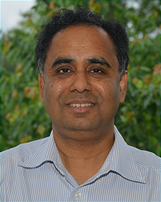
Counterfeit and Clone Component Fingerprinting Using RAMAN and FTIR Spectroscopy
John Kaminski [SMT Corp]
Abstract:
As counterfeit electronic components, including cloned counterfeits, become increasingly complex and more difficult to detect, there is considerable momentum in moving from the standard, moderate-risk AS6171 testing to high-risk level AS6171 testing. Along with expanded electrical testing and advanced radiographical imaging, RAMAN and Fourier Transform Infrared (FTIR) spectroscopy are the primary techniques (in addition to the requirements of moderate risk testing) that can reach the 80% counterfeit detection coverage (CDC) threshold for high risk AS6171 testing. RAMAN and FTIR spectroscopy both utilize light sources to excite/vibrate the molecules of materials, creating spectra based upon absorption from an infrared source (FTIR) or reflection from a monochromatic laser (RAMAN). The resulting FTIR and RAMAN spectra, or “fingerprint”, have unique peaks associated with the various chemical compounds comprising the material being analyzed. In the case of electronic components, the FTIR and RAMAN spectra contain information about the encapsulation and marking material along with any other surface chemistry such as coatings and contaminants. Qualitative assessment of the spectra against a database of material compounds and/or known good samples allows for a straightforward Pass/Fail designation.
Utilizing a comprehensive database of “fingerprints”, counterfeit electronic components can quickly and efficiently be identified with a high degree of accuracy in timeframes significantly faster than scanning electron microscopy, resurfacing/remarking tests, and decapsulation/die microscopy. This presentation will focus on efforts to develop a comprehensive library of components to support “fingerprinting” of authentic, clone, and counterfeit components with discussion on various trends, observations, and case studies.
Biography:
 John Kaminski is an Electrical Engineer at SMT Corporation. He holds a bachelor’s degree in electrical engineering from the University of Connecticut and earned his master’s degree in electrical engineering from the University of Massachusetts Lowell in 2023. At SMT, he develops test fixtures at the system, hardware, and software levels, which are used to test, screen, and qualify critical components for customers’ systems. John joined SMT Corporation in May 2023 and has been with the company for two years.
John Kaminski is an Electrical Engineer at SMT Corporation. He holds a bachelor’s degree in electrical engineering from the University of Connecticut and earned his master’s degree in electrical engineering from the University of Massachusetts Lowell in 2023. At SMT, he develops test fixtures at the system, hardware, and software levels, which are used to test, screen, and qualify critical components for customers’ systems. John joined SMT Corporation in May 2023 and has been with the company for two years.

Dr. Diganta Das
For more information or questions regarding the technical program (including Professional Development Courses), contact the Conference Chair, Dr. Diganta Das

Kristin Nafstad
For more information or questions regarding event logistics, exhibitions, and sponsorship, contact Kristin Nafstad.
Top